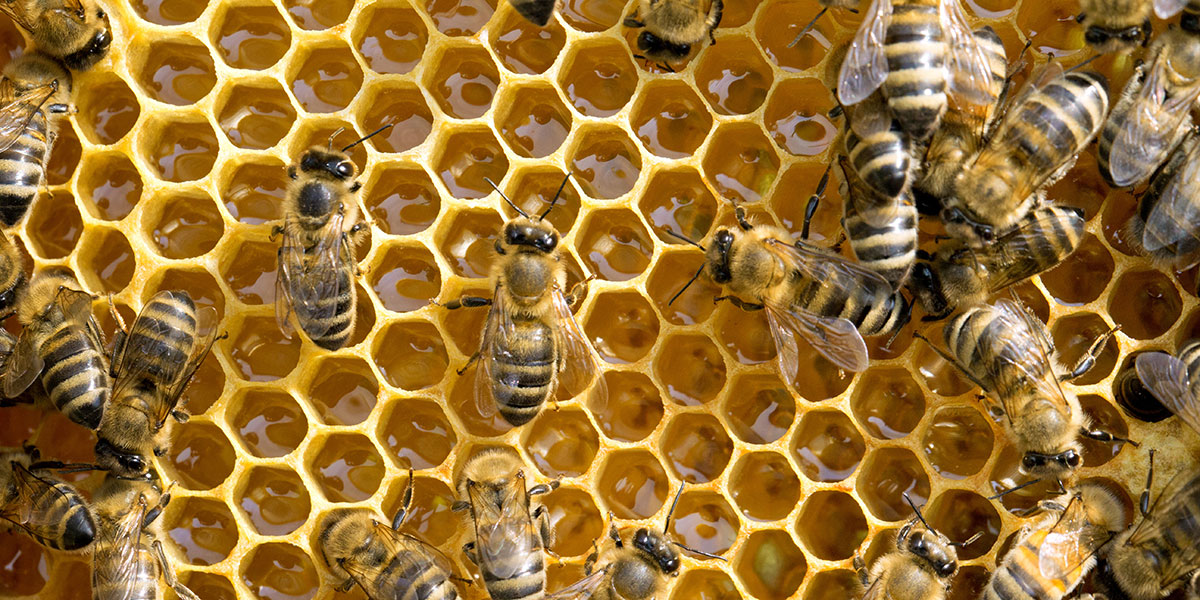Insecticide Harms Bee Colonies During Winter, Study Says

Bees image via shutterstock
Honey bees are still dying at rapid rates, and a new study by Harvard School of Public Health (HSPH) researchers found that widely used neonicotinoids—a class of insecticide—appears to significantly harm honey bee colonies during the winter season, especially during really cold winters like this past one.
The study replicated a 2012 finding from the same research group that found a link between low doses of the insecticide imidacloprid and Colony Collapse Disorder (CCD), in which bees abandon their hives over the winter and eventually die. The new study also found that low doses of a second neonicotinoid, called clothianidin, had the same negative effect. The study appears in the journal, Bulletin of Insectology.
“We demonstrated again in this study that neonicotinoids are highly likely to be responsible for triggering CCD in honey bee hives that were healthy prior to the arrival of winter,” said lead author Chensheng “Alex” Lu, associate professor of environmental exposure biology at HSPH.
According to a report from HSPH:
Previous studies have suggested that CCD-related mortality in honey bee colonies may come from bees’ reduced resistance to mites or parasites as a result of exposure to pesticides, the new study found that bees in the hives exhibiting CCD had almost identical levels of pathogen infestation as a group of control hives, most of which survived the winter. This finding suggests that the neonicotinoids are causing some other kind of biological mechanism in bees that in turn leads to CCD.
In the new study, 12 pesticide-treated hives experienced a 50 percent CCD mortality rate, but the authors say that in the previous 2012 study, those pesticide-treated hives had a much higher CCD mortality rate of 94 percent. That much larger rate occurred during the particularly cold and prolonged winter of 2010-2011 in central Massachusetts, which lead the authors to speculate that colder temperatures and neonicotinoids may play a role in the severity of CCD.
According to the study:
Lu and his co-authors from the Worcester County Beekeepers Association studied the health of 18 bee colonies in three locations in central Massachusetts from October 2012 through April 2013. At each location, the researchers separated six colonies into three groups—one treated with imidacloprid, one with clothianidin, and one untreated.
There was a steady decline in the size of all the bee colonies through the beginning of winter—typical among hives during the colder months in New England. Beginning in January 2013, bee populations in the control colonies began to increase as expected, but populations in the neonicotinoid-treated hives continued to decline. By April 2013, 6 out of 12 of the neonicotinoid-treated colonies were lost, with abandoned hives that are typical of CCD. Only one of the control colonies was lost—thousands of dead bees were found inside the hive—with what appeared to be symptoms of a common intestinal parasite called Nosema ceranae.
“Although we have demonstrated the validity of the association between neonicotinoids and CCD in this study, future research could help elucidate the biological mechanism that is responsible for linking sub-lethal neonicotinoid exposures to CCD,” Lu said. “Hopefully we can reverse the continuing trend of honey bee loss.”


